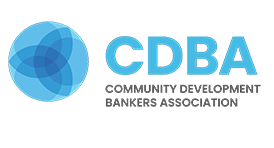News
Amalgamated Bank in New York, which recently agreed to buy a West Coast institution, has big plans to operate in a number of major U.S. cities. Amalgamated, for its part, envisions becoming an institution with operations in other left-leaning cities such as Austin, Texas; Boston; and Chicago, said Keith Mestrich, the bank's president and CEO. Expansion could involve branches or acquisitions. Amalagamated Bank, alongside CDBA members Southern Bancorp, Sunrise Banks, and Beneficial State Bank, is a part of the Global Alliance for Banking on Values -- a group focused on reaching underserved populations.
In this article, Carl Hairston, Executive Vice President and Chief Lending Officer at City First Bank, is interviewed by the Huffington Post on corporate social responsibility and the ideal framework for deepening company impact. "98% of bank deposits in DC are placed within 24 banks, and those 24 all make more investments outside of the DC market than they do within it," Hairston explained. "Our mission is to go to whatever prudent and reasonable lengths we can in order to help those individuals access the working capital they need for viable credit opportunities."
This week, the Board of Trustees for Adams State University in Alamosa, Colorado approved the naming of the new First Southwest Bank Center for Economic Opportunity on campus. The center will open in January 2018 and will focus on community-based strategic planning and trainings to promote local business startups, thereby improving job creation, job retention, and local income levels. The University's expertise in business education and community partnerships will inform the project design and approach.
In this article, the American Banker discusses how OneUnited Bank in Boston has a plan to remain relevant while continuing to press for social justice. The nation's biggest black-owned bank has adopted a business model aimed at becoming a digitally-focused retail bank. It has scaled back its physical operations, closing a pair of branches in Los Angeles last year. It has also added thousands of ATMs that customers can access without a fee, and it plans to add Apple Pay to its menu of online services. The strategic shift comes at a critical time.
All Albina Community Bank branches are set to convert to Beneficial State Bank branches on February 1, 2018, after the two banks announced regulatory approval of their merger this week. Beneficial State, headquartered in Oakland, California, has owned a majority share of Albina in 2013, which it acquired in an effort to help stabilize the Portland-based bank after a period of industry turbulence. Three Albina members will join the Beneficial State board.
If Congress succeeds in passing regulatory relief, consumers in rural areas could soon find it easier to open accounts at banks and credit unions. Under a provision tucked into the Senate version of a regulatory relief bill that passed out of committee last week, financial institutions would be able to use a scan of a customer's driver's license or other photo identification to verify that person's identity when opening an account online. The Making Online Banking Initiation Legal and Easy, or MOBILE, Act, is intended to address a patchwork of state-level restrictions concerning how state-issued photo IDs may be copied or used.
This week, CDBA CEO Jeannine Jacokes contributed an op-ed to the American Banker urging that Congress preserve New Markets Tax Credit (NMTC) funding in 2018-2019. The article provides examples of improved healthcare access and expanded manufacturing manufacturing capacity through NMTC. “Decades of community development experience have proven that tax breaks alone are simply inadequate to spur economic activity in the most distressed places,” Jacokes wrote. “If they don’t preserve the NMTC, Congress could leave communities in need of a real boost at greater risk.”
Today the Federal Housing Finance Agency (FHFA) approved Fannie Mae's and Freddie Mac's Underserved Markets Plans for 2018-2020. Under the Duty to Serve (DTS) program, the FHFA required each Enterprise to adopt a three-year Underserved Markets Plan that aims to increase the liquidity of mortgage financing to families with very low to moderate incomes in three underserved markets: rural housing; manufactured housing; and affordable housing preservation markets.
If you live in rural America and have a heart attack — or stroke — you may be in really big trouble. Over 30 million Americans live more than an hour's drive from a trauma center and an estimated 673 rural hospitals are at risk of closure, exemplifying a nationwide trend that threatens rural health care access. Yet an amazing thing happened at Monroe County Hospital in Monroeville, Ala. In 2017, it received a $6 million capital injection to renovate and expand its emergency room and oncology department thanks to a small, but potently impactful, federal program called the New Markets Tax Credit.
The Distressed Communities Index (DCI) combines seven complementary metrics into a broad-based assessment of community economic well-being in the United States. The 2017 DCI finds that 52.3 million Americans live in economically distressed communities, with over half residing in the South. Distressed communities exist in red states and blue states: 36.4 million constituents inside distressed zip codes are represented by the Republican party at multiple governments, and 16 million constituents inside distressed zip codes are represented by the Democratic party.
